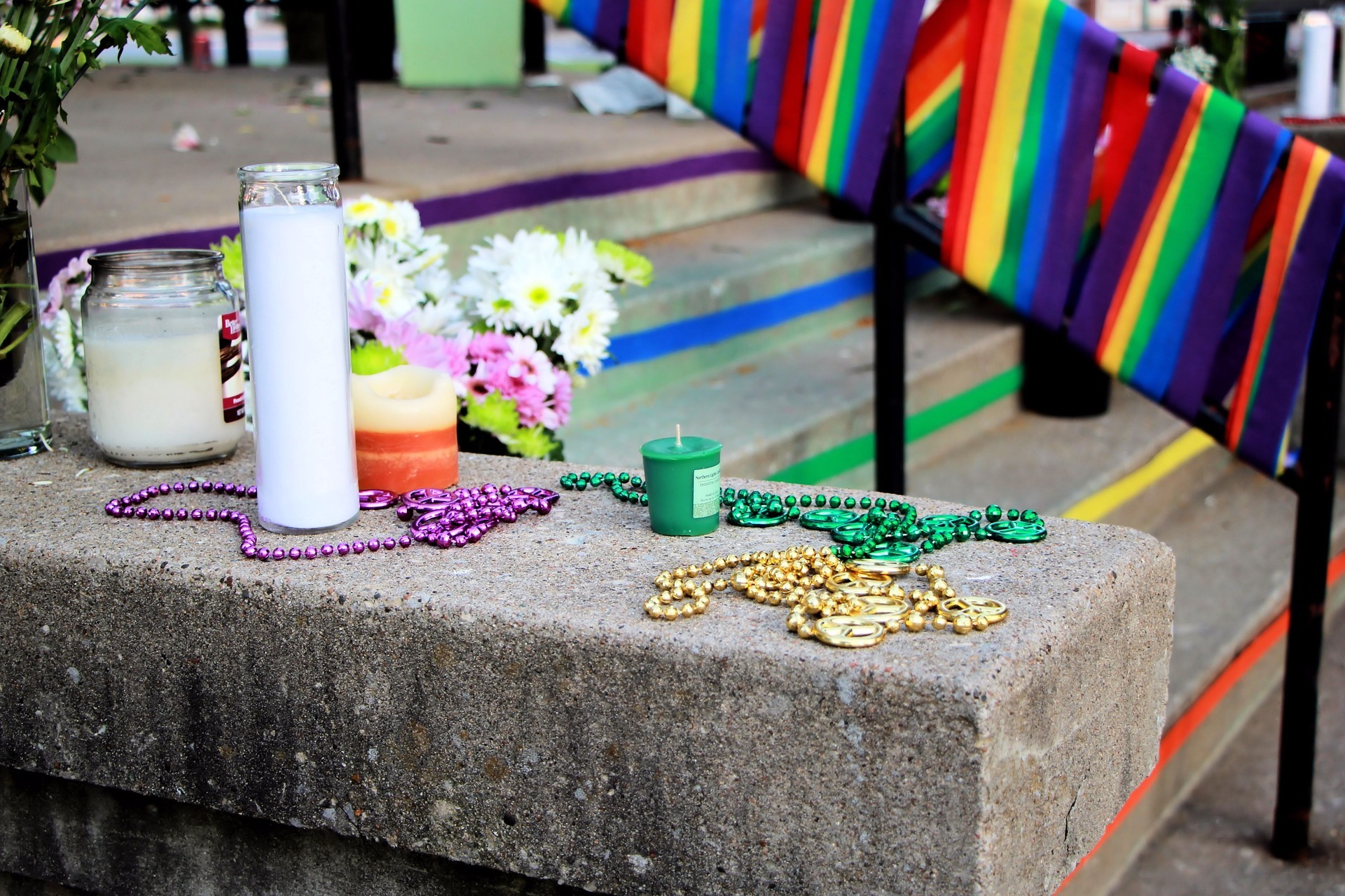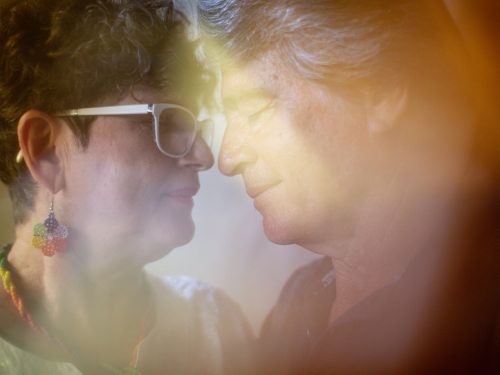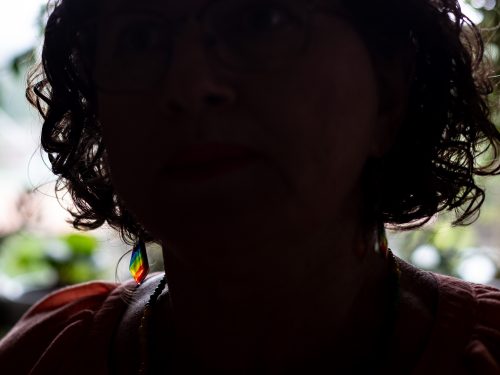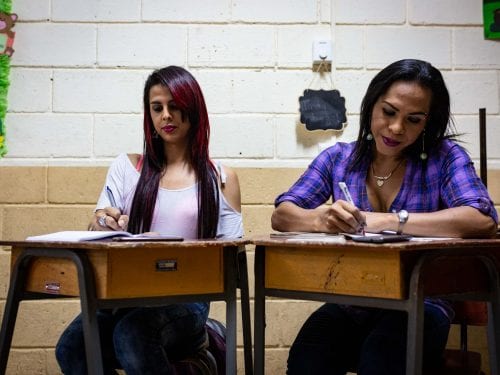
Early in the morning on Monday, December 7, Tati Quiros was killed by gunshots to her chest in Playas del Coco, Carrillo. The news began to circulate, saying that the victim was “a young man”, that he was “undocumented” and was a “transvestite,” and each publication was accompanied by a photo of her: a trans woman.
Dozens of comments asked questions like, “Is it necessary to publish a photo of the deceased person?”, “Why does sexual orientation have to be mentioned?” and “Why does it say ‘a young man’ when a photo of a woman ispublished?” A series of answers and discussions surrounded the questions.
At The Voice, we wanted to delve into how information about a crime is handled and how to respect the dignity of the victim, who was part of the sexually diverse LGBTIQ+ community. What follows is a series of explanations that take into account the questions raised on social networks.
1. First of all, was it necessary to publish the photo?
The Ethics Office of the Gabo Foundation, a Latin American journalistic organization, explains that the news media should avoid publishing photos of dead bodies “for reasons of respect for the person and their family and friends.”
Instead, the organization says “it is preferred to publish the photograph of that person in life.” We might not think that publishing Tati Quiros’ photo was bad, but it’s relevant to take into consideration that photography should never contribute to morbidness.
In this sense, it’s worth asking once again what was the intention of sharing Tati Quiros’ photo and, even more so, why choose the particular photo that is circulating widely on social media pages and WhatsApp groups in the province.
The Presidential House’s commissioner for the LGBTIQ+ community, Margarita Salas Guzman, thinks that in this case, the photograph oversexualizes her. In other words, it’s content is overly sexual.
“It’s a high angle shot. It focuses on her mouth, her breasts and her waist. This isn’t the way a person’s photo would [usually] be taken. It’s not a straight-on shot,” she pointed out.
“What is the medium that publishes this implying? How do they want this person to be perceived?” Salas Guzman also asked.
Is this the way her family and people close to her want her to be remembered? I don’t believe so. It’s important to respect the pain and loss of close [friends] and family,” she added.
The Transvida Association’s political advocacy coordinator, Samantha Araya Manzanares, remarked, “They looked for the most hypersexualized photo to illustrate a yellow-journalism article.”
And she added, “We have stood out for raising social awareness and making people see that we have the right to move forward, to exist, to have a better quality of life and a respectable job.”
2. Why does sexual orientation have to be mentioned?
To answer this question, we must first understand the meaning of two terms: sexual orientation and gender identity.
Sexual orientation refers to people’s physical or emotional attraction, that is, if you feel attracted to someone of the same sex (homosexual), of the opposite sex (heterosexual), of both sexes (bisexual) or neither (asexual).
On the other hand, gender identity has to do with how each person feels, so they might identify with a gender other than their sexual or physiological characteristics, for example, a person who was born with male genitalia but who identifies as a female.
This is the case for transgender and transsexual people.
Transgender people are those whose gender identity and expressions are different from the biological body they were born with, but they haven’t necessarily undergone any type of physical sex-change procedure. On the other hand, transsexuals modify their bodies so that their sex coincides with their gender identity.
However, trans people (whether they are transgender or transsexual) have expressed that they just want to be known as trans people. “It is an umbrella [term] that encompasses other categories,” pointed out Araya Manzanares.
3. But then, was knowing the person’s gender identity relevant?
First, we have to understand that the person’s gender identity should always be respected. Salas Guzman, the LGBTI commissioner, indicated that the most serious thing about the treatment of information is that this has been disrespected.
There is no reason why they have to treat her in masculine terms,” added Salas Guzman. “She is a person who has assumed her identity as a trans woman.”
Some guides on handling information on sexual diversity even indicate that it is irrelevant to indicate that someone is a trans person unless that information is important to understanding a fact, in this case the crime.
In other words, in this case, it would be important to indicate that she is a trans woman if her gender identity played a role in the motive for the murder, which would make it a hate crime or transfemicide.
4. What are hate crimes and transfemicides, and how are they tried in Costa Rica?
A hate crime is exclusion, discrimination or physical violence against a person or a group based on gender, race, ethnicity, religion, physical condition, sexual orientation, gender identity, gender expression or political idiology, explains an analysis by Hivos and the Country Coordinating Mechanism (MCP- Mecanismo Coordinador de País).
However, hate crimes are not categorized by type in Costa Rican legislation (with the exception of femicides, which are homicides of women based on their gender).
As there is no classification of hate crimes based on gender identity or sexual orientation, they end up being tried as homicides, which does not denote the responsability of hate or discrimination that they entail.
Transfemicides are femicides committed against trans women. However, they aren’t classified that way within legislation either.
“The femicide of trans women is made invisible even if it is committed by their partner or ex-partner within the parameters of the Law on Penalization of Violence against Women,” Hivos and MCP point out in their analysis of hate crimes motivated by gender identity and sexual orientation in Costa Rica.
According to the same report from Hivos and MCP, no institution in the country maintains a parallel registry that allows hate crimes to be quantified, which creates a lack of awareness of the reality that people in the LGBTIQ+ community experience.
According to Salas Guzman, there are two bills being considered by commissions of the Legislative Assembly to categorize hate crimes. The Voice was able to locate bill 22.171, which is in the human rights commission, and 20.174, which is in the plenary motions stage.
5. What about the detail about the person being undocumented?
According to the LGBTI commissioner, “it is irrelevant to the facts of the murder unless it is suspected that this is the motive [for the murder].”
She added: “but in a country like Costa Rica, it is extremely stigmatizing to suggest that it is an undocumented Nicaraguan person because this reinforces xenophobia stereotypes.”
6. What will happen now regarding the murder of Tati Quiros?
The Judicial Investigation Agency (OIJ) is investigating the incident, the press office of the Santa Cruz Prosecutor’s Office informed The Voice of Guanacaste. “Once [OIJ] finishes the investigation procedures, they must submit a report to the Public Ministry,” they indicated.
The Voice of Guanacaste also consulted the OIJ on the progress of the investigation, but they did not respond by the time this article was published.
“We hope that the full weight of the law falls on the person who is guilty of taking the life and dreams of a 21-year-old girl,” Araya Manzanares stated.
She also added that this is a reminder of the daily violence that trans people face.
“We have always been excluded, singled out and stigmatized by society, to the extent that they hunt us for sport,” recalled Transvida’s advocacy coordinator, Araya Manzanares.
See how far the violence goes against trans women when our companion continues to scream and fight for her gender identity while still on a forensic table.”








Comments